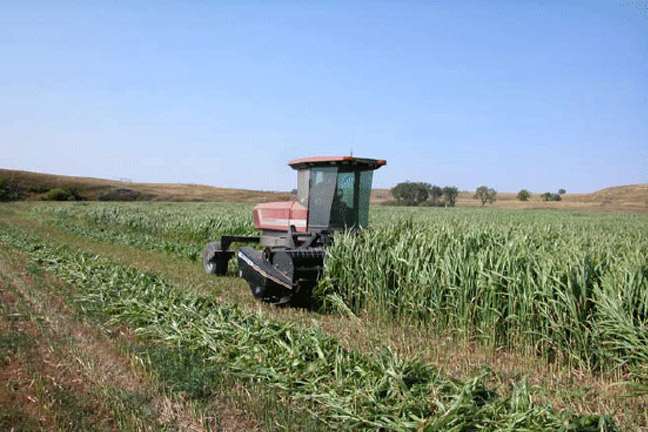
Dr. Glenn Selk, Oklahoma State University Emeritus Extension Animal Scientist, offers herd health advice as part of the weekly series known as the "Cow Calf Corner" published electronically by Dr. Peel and Dr. Glenn Selk. Today, Dr. Selk offers advice to producers on how to test forage feeds and avoid the consequences of unintentional nitrate poisoning of cattle by eating heat stressed plants.
"Summer has definitely arrived in Oklahoma! Hot dry summer weather brings about heat and drought stress on summer annuals. Stressed plants such as the forage sorghums can occasionally accumulate dangerous concentrations of nitrates. These high nitrate plants, either standing in the field, or fed as hay, can cause abortion in pregnant cattle, or death if consumed in great enough quantities. Nitrates do not dissipate from suncured hay (in contrast to prussic acid), therefore once the hay is cut the nitrate levels remain constant. Therefore, producers should test hay fields before they cut them for hay. Stop by any Oklahoma Cooperative Extension County Office for testing details. Testing the forage before cutting gives the producer an additional option of waiting and allowing for the nitrate to lower in concentration before harvesting the hay. The major sources of nitrate toxicity in Oklahoma will be summer annual sorghum type plants, including sudan hybrids, sorgo-sudans, sorghum-sudans, millets, and Johnsongrass. See OSU Fact Sheet PSS-2903.
"Some of the management techniques to reduce the risk of nitrate toxicity (Note: the risk of this poisoning cannot be totally eliminated), include:
"1) Test the crop before you harvest it. IF it has an elevated concentration of nitrates, you still have the option of waiting for normal plant metabolism to bring the concentration back to a safe level. And experience tells us that we cannot estimate nitrate content just by looking at the field.
"2) Raise the cutter bar when harvesting the hay. Nitrates are in greatest concentration in the lower stem. Raising the cutter bar may reduce the tonnage, but cutting more tons of a toxic material has no particular value.
"3) Know the extent of nitrate accumulation in the hay and the levels that are dangerous to different classes of cattle; ie, pregnant cows, open cows, or stocker steers. If you still have doubt about the quality of the hay, send a forage sample to a reputable laboratory for analysis, to get an estimate of the nitrate concentration. This will give some guidelines as to the extent of dilution that may be necessary to more safely feed the hay.
Click here to see more...